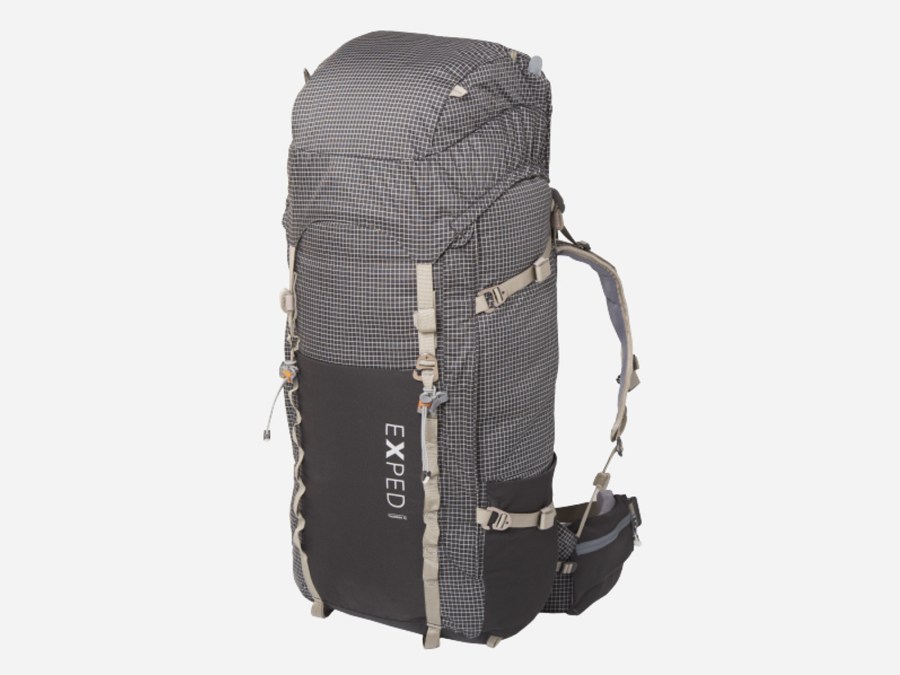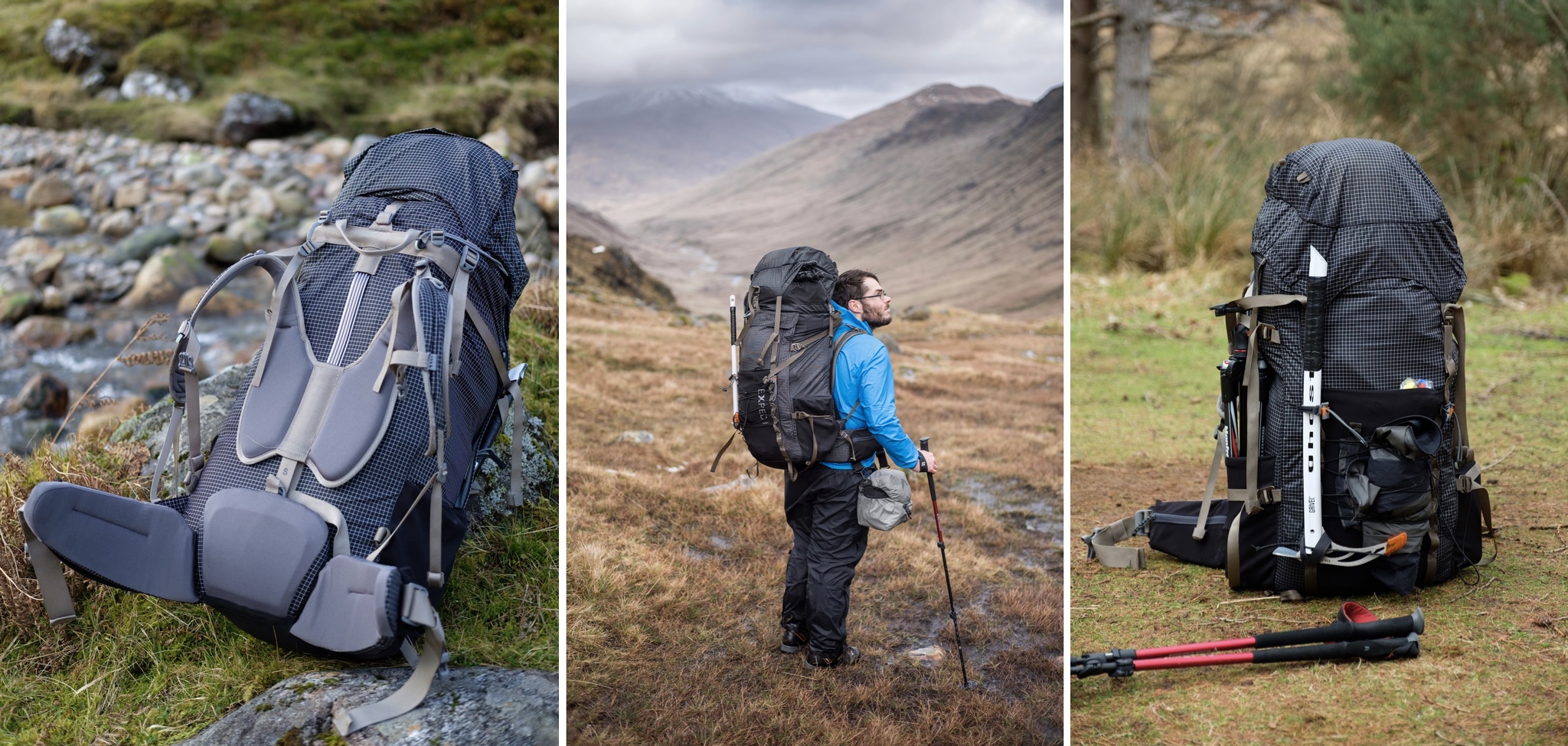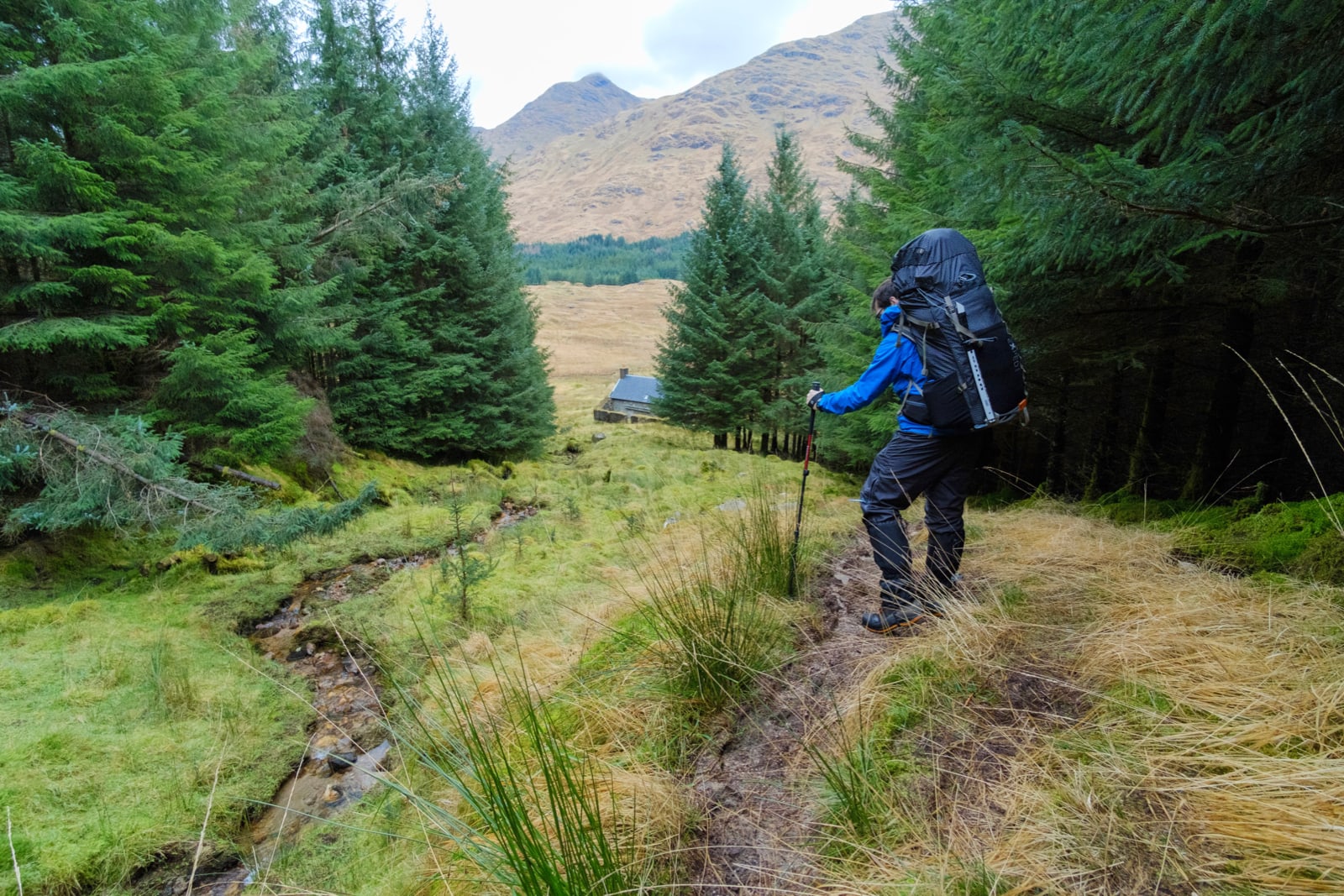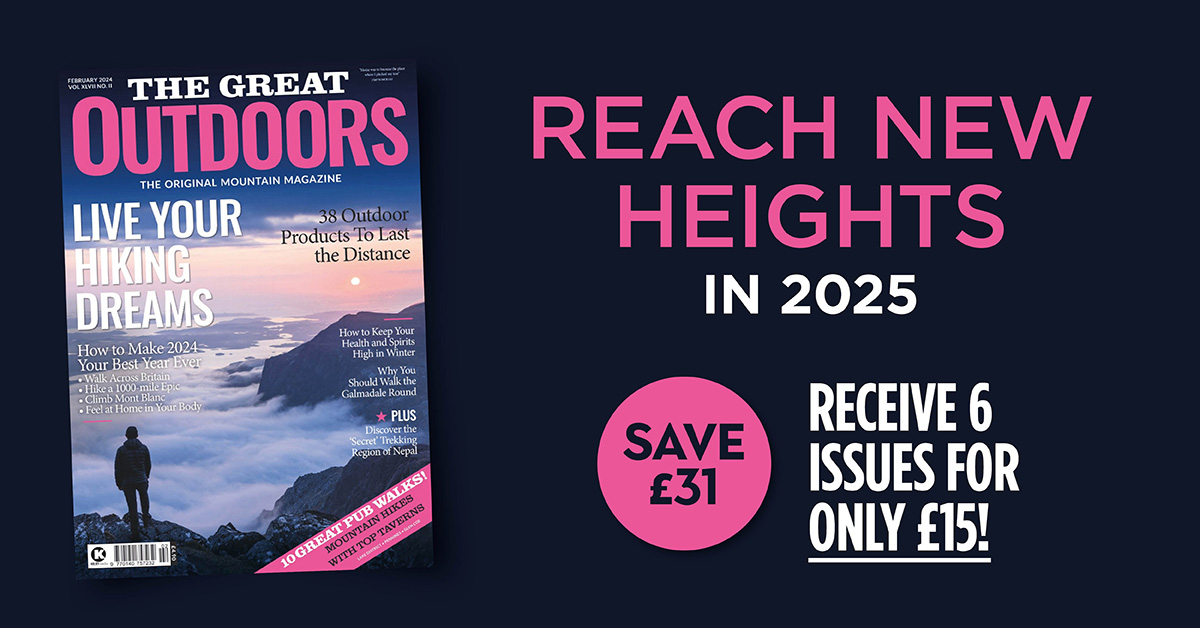Alex Roddie reviews the Exped Thunder 70, a big pack for serious trips that still manages to keep the weight down.
When selecting gear for my February 2019 Cape Wrath Trail, I had a hard time picking the right pack. I’d be carrying heavy, bulky winter gear, and a lot of food at times; I needed something with a large capacity, capable of carrying heavy loads. But I also wanted to keep the weight down where possible. I favour relatively simple packs without an abundance of additional pockets, widgets and whipsnips (a technical term for random straps that smack you in the face in high winds).
Striking the right balance between all these requirements is no easy task. And although the Exped 70 doesn’t get all the way there, it gets pretty close. This is a great pack with only a few downsides.
What the Thunder 70 offers
Exped describe the Thunder 70 as a “trekking pack with a superb weight to volume/feature ratio”. The Thunder range sits between their seriously beefy Expedition packs, which go all the way up to 100 litres, and the much lighter Lightning range. The Thunder pack is available in 50 and 70 litre variants and for both men and women. There are several different colour options.
The Thunder 70, which weighs 1.6kg, is made from a hard-wearing ripstop nylon material, coated in PU and waterproof (although the pack itself is not seam taped). Its frame consists of a single aluminium stay. The pack has a single large main compartment, accessed by a large drawstring opening with a spindrift collar. There is also a large zip front opening that lets you peel away the entire front of the pack to get at the contents. Pockets are minimal: two stretch wand pockets, capable of holding a water bottle apiece, and a slender stretch front pocket, big enough for a lightweight waterproof. The lid is a fairly standard floating design with a large main pocket and a smaller pocket beneath the lid.
The harness is simple but fully adjustable, with a really good, well-padded hipbelt and a generous lumbar pad. The back looks minimally padded at first glance but the padding is in all the right places.
There’s a good selection of attachment points, including two large daisy chains running down the front, twin ice axe loops, side compression straps, and loops for attaching gear on both the bottom of the pack and the lid pocket. Adjustment buckles are made from hard-wearing metal. There are no plastic buckles to break.
On the trail
To date, I’ve used the Thunder 70 for around 30 days on the trail, carrying loads between 10 and 22kg. The 70l capacity was just right for me on my winter CWT: it enabled me to carry all the winter gear I needed plus food for a week, but the pack’s weight of 1.6kg is remarkably light for what you get.
The Thunder 70 carries loads up to around 15kg well, but beyond this the shoulder straps become a limiting factor. The problem here is that they are just a bit thin and have limited padding. By the second week on the CWT my shoulders were feeling quite sore from hauling the weight, even though most of the weight was being transferred to my hips by the excellent hipbelt and surprisingly effective (yet minimal) pack frame.
Thanks to the floating lid and generous straps, the pack can expand to accommodate a huge amount of extra kit. This is a quality I appreciated after loading up on food. A nice touch is that each strap is equipped with a Velcro ‘keeper’ – you can roll the strap end up into itself, reducing its length if required. This helped to prevent the dreaded whipsnips.
Additional storage is one area where the Thunder 70 does fairly well, but could be better. I had no problems strapping tent to the bottom, snow shoes to the sides, ice axe to the front, and camera tripod to the top. I added my own bungee cord between the daisy chains and often used this area for my waterproof trousers. However, the stretch pockets are disappointing. The capacity is small and they don’t stretch that well either – the front pocket, for example, is quite tight and doesn’t have much capacity. It’s big enough for a lightweight shell and a map but not much more. The wand pockets are big enough for a Nalgene bottle, but not a Nalgene plus trekking poles without a tight squeeze.
While the big front zip, allowing access to the main compartment, looks like a handy feature on paper, in reality I never needed or used it. I’m so used to packing things in a sensible order that accessing items the conventional way (via the top opening) was always best. That said, the zip opening could be useful if you find yourself using the Thunder 70 for general travel; I can imagine it being a handy way to access layers of clothes packed further down the rucksack. Luckily, the zipper access is well battened-down and did not noticeably reduce the pack’s weather resistance in heavy rain (it’s guarded by generous wired stormflaps and Velcro closures). Weather resistance is overall good; in driving rain some water does eventually penetrate, as you’ll find on most packs in this class. A pack liner or dry bags should be used if rain is expected.
While the stretch pockets have held up well to abuse, and exhibit only a few light marks, the material is not very durable and I have no doubt that repeatedly shoving ice axes, trekking poles and snow shoes into the wand pockets will tear them over time. Much more durable stretch mesh is available, so this seems like an odd choice for a pack otherwise so well suited to winter use and abuse.
Overall durability and quality of materials are absolutely top-notch. I’m pretty sure the body of the pack itself will outlive me (and possibly the solar system). Those lovely metal buckles are reassuringly solid and a nice touch that I appreciated every day on the trail.
Who is the Thunder 70 for?
This is a very solid pack for backpacking at all times of the year. Its blend of useful (but not over-the-top) features and comparatively low weight makes it an attractive choice for winter backpacking, and it has a good feature set for summer trekking too. The Exped 70 will feel at home anywhere from Everest Base Camp to the Pennine Way. Its design is overall very good with some really well-thought-out details, such as the excellent buckles and straps.
That said, it does have some flaws. Thin shoulder straps reduce the pack’s carrying comfort with heavier loads, and the stretch pockets are a miss. Beefier shoulder straps and more durable, more expandable stretch pockets might add a little weight but would make this pack near-perfect for winter backpacking. There’s a big gap between the Thunder 70 at 1.6kg and the Expedition 65 at 2.3kg; an updated Thunder 70 with improved features at 1-200g more would be a win, I think.










